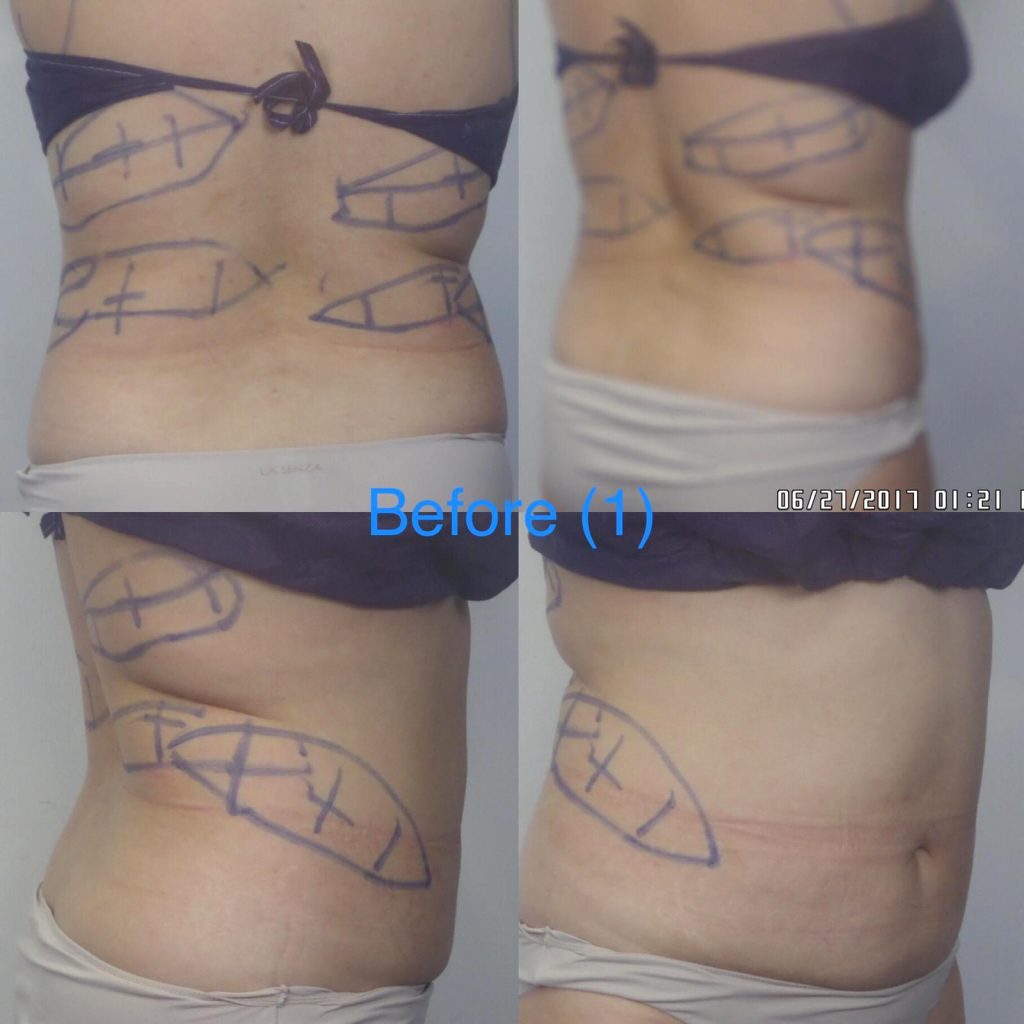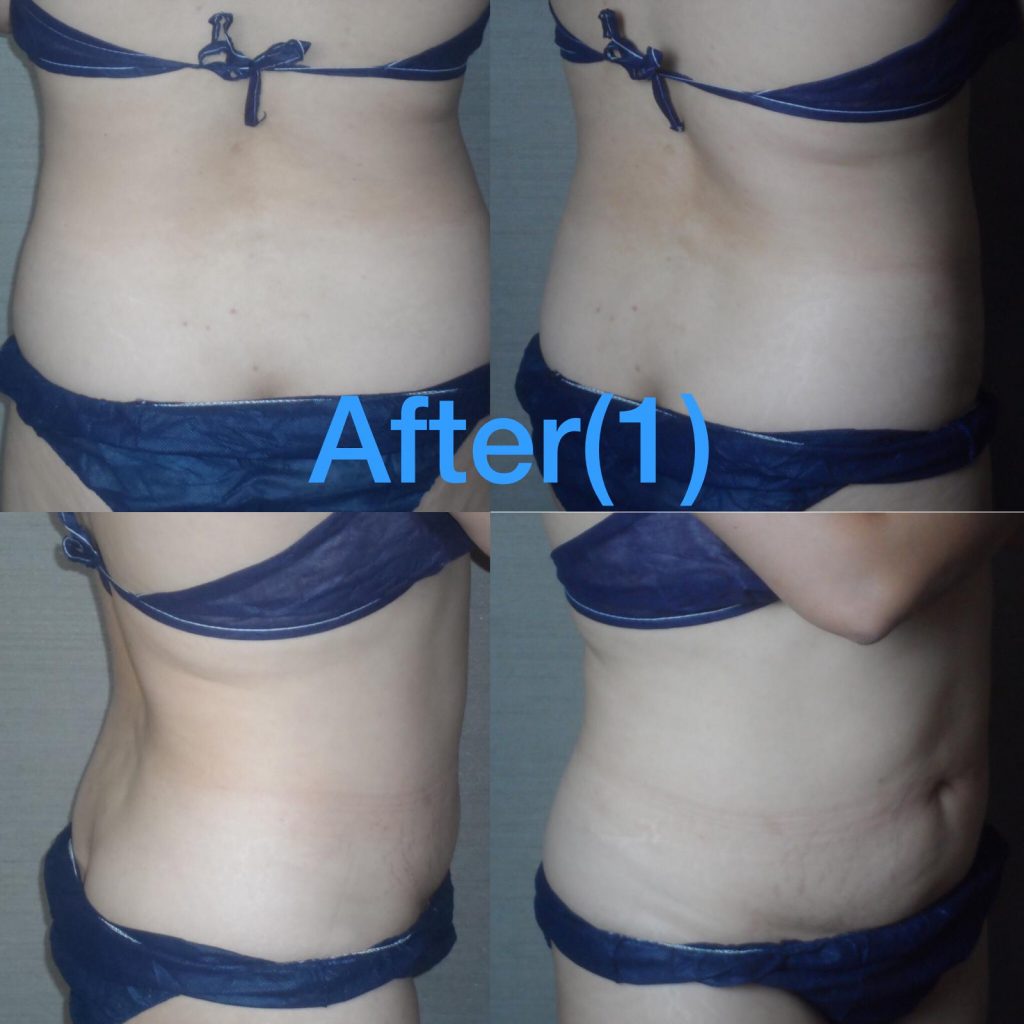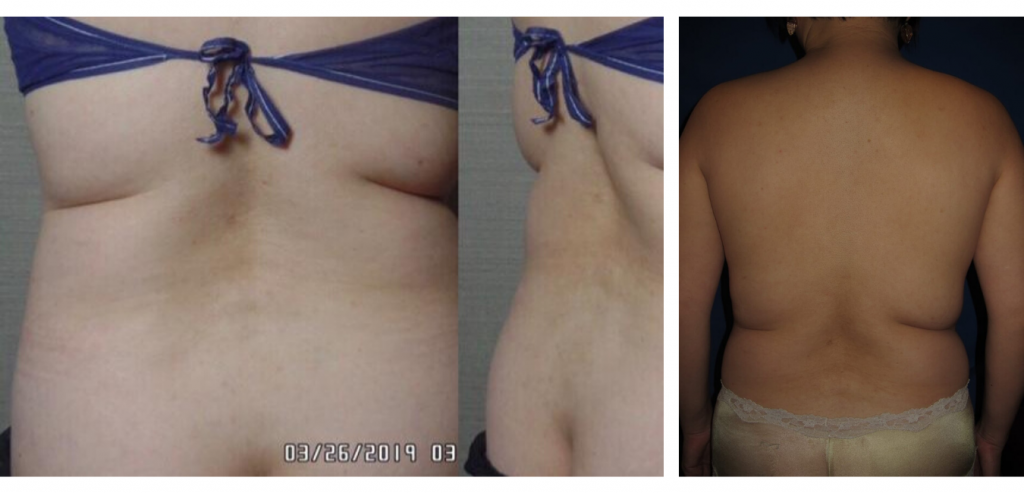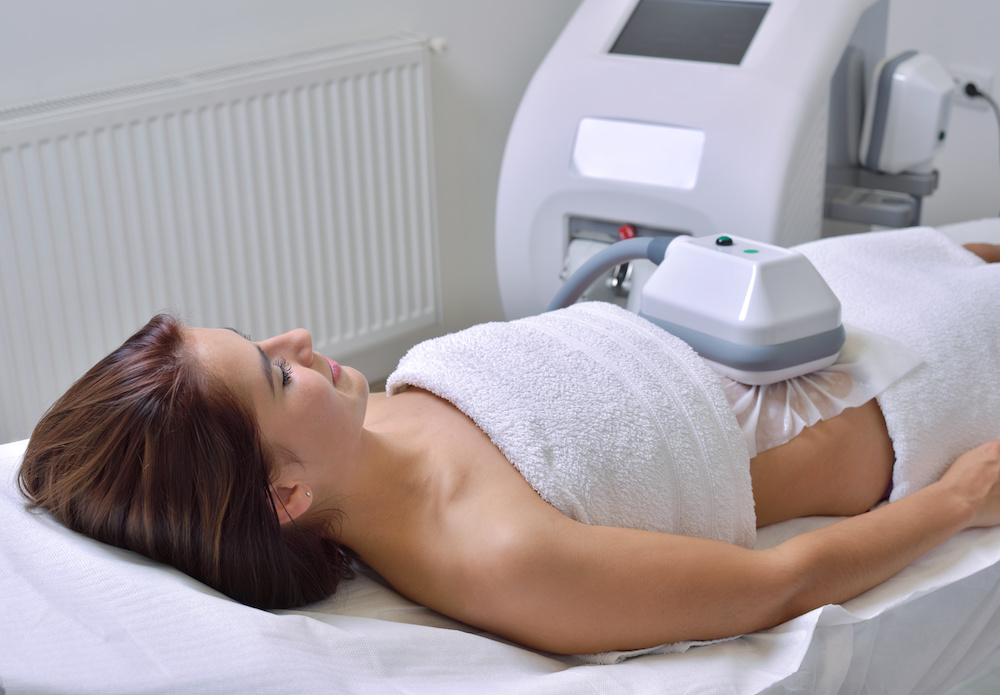Considering freezing your fats? While some patients may get good results from this procedure, others might experience a side effect – Paradoxical Adipose Hyperplasia. One mum shares her story.
Fat freezing is minimally invasive, has little to no downtime and can reduce inches off your waist and hips. In recent years, mums wanting to shed postpartum weight have opted for such procedures. However, for a small percentage of those who try fat freezing, they may experience a side effect where the fat enlarges rather than shrinks.
Her story
Why she opted for fat freezing
Rebecca*, mum of two, tried fat freezing because she wanted to balance both sides of her back. She has a bit of sclerosis so her back is curved. Hence, clothes don’t fit her well on that side of her body. In order to minimise the unevenness, she considered fat freezing.
She did not want to return to liposuction as she had very bad bruising after her first experience. Thus, she tried fat freezing, as it’s non-invasive and has very little downtime.
Her results post-procedure


In 2017, she opted for a package deal. The therapists did fat freezing on her back, two side flanks, inner thigh and the bustline area. One to two months later, the targeted areas had shrunk, much to her delight.
Discovering lumps
Throughout her life, she says she’s always been fat. As such, she’s always been careful with what she eats. Case in point: when we met for the interview she drank black coffee with no sugar. She restarts dieting once she notices she’s put on weight.
In 2018, she discovered lumps around her body, especially when wearing her bra and buttoning up her shirt. She says “it felt tighter, and strained.” While these lumps could have been weight gain, they looked much more disproportionate.
Then, in December 2018, she noticed a proper lump. This came after she’d been hiking and had lost some weight. There were two very defined lumps at the side flanks. Additionally, these lumps caused a second fold below. Moreover, the areas where the fat treatment was done had become very distinct and hard.
Her diagnosis: Paradoxical Adipose Hyperplasia

Thus, she returned to the doctor. Internally, she blamed herself for not doing more rounds of treatment. When the doctor saw her current condition compared to her old photos, Rebecca says the doctor knew something was wrong. The doctor then told her she might have paradoxical adipose hyperplasia.
This condition, the doctor added, is super rare. She said it only happens to one in a thousand people, and only to blacks and Hispanics. The doctor took pictures and sent them to the manufacturer. Rebecca then started researching this condition. She then realised that other people had a similar condition as her.
Seeking recourse
Five months after her visit in March 2019, she was told to seek out a liposuction doctor. At the same time, the doctor put in place the protocol to advise patients of the possibility of getting PAH. More clinics have also put the risk of getting PAH on their websites. Hence, patients will know that this is a possibility and not blame themselves for getting fat. Rebecca adds, “You wouldn’t disparage the treatment that you spent so much money on”.
In September, she noticed that the growths were accelerating till they looked like a tumour. When she finally did liposuction, the doctor took two to three hours more as the growth was so hard. Additionally, she also suffered from lots of bruising and pain after the surgery because of the extent of the lumps around her body.
What is fat freezing?
Fat freezing, also known as cryolipolysis, is where excess fat is frozen and then eliminated from the body. As fat is more sensitive to temperatures, it can experience cell death before the skin does. Some benefits are that fat freezing treatments, like CoolSculpting, are non-surgical. These are also non-invasive with minimal downtime. Also, Zeltiq, the manufacturer of CoolSculpting claims to reduce the treated areas’ fat cells by about 20 to 25 per cent each time.
Medical director of Calvin Chan Aesthetic & Laser Clinic, Dr Calvin Chan, explains that CoolSculpting was developed by Harvard University scientists. The FDA-cleared procedure for fat loss and circumferential reduction has more than 10 years of robust clinical studies supporting this claim.
Fat freezing results: Our doctor's experience
He stresses that patients should look for “an experienced physician with a team that’s constantly trained and updated with the latest tools, techniques and treatment protocols”. In his experience, he has found CoolSculpting results to be “predictable and side effects like pain and bruising limited and manageable”. Of course, his clinic works together with patients to develop a “realistic, affordable treatment plan to help each patient reach their body sculpting goals.”
Side effects of CoolSculpting
While one of the most serious side effects is PAH – as it requires liposuction to treat – patients might also experience other side effects. According to Dr Chan, some of these might include “redness, swelling, tenderness, cramping and aching. Others might include numbness in the treatment area, while rarer adverse events might include late onset pain or freeze burn.
However, Dr Chan notes that the latter is pretty uncommon. Precautions taken to avoid frostbite include placing a gel-infused pad over the treatment area before any CoolScultping procedure. This forms a protective barrier between the skin and handpiece to safeguard skin against frostbite.
Is CoolSculpting effective?
On the other hand, renowned plastic surgeon Dr Woffles Wu is not enamoured with fat freezing procedures at all. Although he has pioneered new technologies like IPL and the Woffles Non Surgical FaceLift in Singapore, a CoolSculpting machine is something he currently has no interest in purchasing.
First and foremost, he doesn’t believe in the technique and feels that physically removing the fat via liposuction is the only method that truly works. He says, “Once it’s in the bin, it’s in the bin.” In fat freezing, no one can be sure how much of the fat cells are dead, alive or half-dead. Of these, there’s a possibility that some of these fat cells can regrow, and patients have to return for more sessions to repeat the process. According to Dr Wu, the results are also not uniform: some might get good results while others get none at all, or get complications like PAH.
Also, he found that most people don’t read the consent form thoroughly. As a result, they would be unaware of serious conditions like PAH. Doctors then have to verbally tell their patients about PAH. Hence, Dr Wu finds that fat freezing machines just have too much unpredictable risk.
Our findings
Number of worldwide PAH cases
The exact statistics are unclear, as many cases probably go unreported, mainly because they might assume they had just gained weight rather than develop such a condition.
According to a study reported by Science Daily in 2018, the statistics of PAH is estimated to occur in one out of every 4,000 treatment cycles, or an incidence of 0.025 per cent. This data is from the manufacturer of the cryolipolysis equipment. Other research from the Aesthetic Surgery Journal states the incidence to be about 0.78 per cent, although their case study had an incidence of about 1 per cent.
Meanwhile, Dr Chan cites Allergan, CoolSculpting’s parent company’s clinical studies with regards to PAH incidences. Their statistics revealed only four such cases in 4,792 treatments. Furthermore, he’s been using CoolSculpting in his practice since 2010. In 2018, he performed over 1,000 treatments in 2018, and has yet to see a single case of PAH.
To clarify, the actual total recorded occurrences of PAH are not only related to CoolSculpting or other cryolipolysis treatments. Other fat reduction techniques involving heat have also reported cases of PAH.
Number of local PAH cases
In our unofficial study, the doctors we interviewed have seen about 23 to 33 cases in the last five years, where most cases were locals.
Potential causes of PAH
Do note that many patients receive favourable results with CoolSculpting. However, little is known about what exactly causes Paradoxical Adipose Hyperplasia. Medical directors of Amaris B. Clinic and SW1 clinic, Dr Ivan Puah and Dr Low Chai Ling respectively, agree that the absolute cause remains unknown. Additionally, there are currently no identifiable risk factors for paradoxical adipose hyperplasia.
A possible cause: injured fat tissue
Founder Dr David Loh of his eponymous clinic posits a possible cause of cold injury from CoolSculpting. Dr Puah agrees, saying, “It is postulated that it is a rare delayed side effect following cryolipolysis.” This is caused by unintended stimulation of “tissue growth following a treatment that injures the target tissue.”
What this essentially means, Dr Wu explains, is that in fat freezing treatments, some fat cells die, others live and there are others that are in between. These injured cells then trigger the body’s stem cells to repair them, and this may lead to fat regrowth over time.
Despite initial studies that suggest a high vacuum settings and large applicator sizes might be the cause, Dr Chan says that he has used large, normal and small applicators and has not encountered PAH. Additionally, with recent updates in the technology, he believes the treatment is even less likely to cause complications. The new CoolAdvantage handpieces reduce treatment times by 42 per cent, while offering greater patient comfort and design improvements. This means handpieces can treat 10 per cent more tissue with less suction as compared to the older CoolCore applicator.
Genetic factors as potential cause
Dr Puah, Dr Loh and Dr Samuel Ho, consultant plastic surgeon and medical director of Allure Plastic Surgery, think there might be a genetic connection. Dr Puah says,”I have seen cases where PAH affected both the father and son after their fat freezing treatments.” Other cases included affected patients “developing consecutive PAH after consecutive fat freezing treatments.” Hence, he believes there could be a genetic predisposition to PAH.
Agreeing with this, Dr Loh says, “the propensity to form dense fibrous tissue is a trend that runs in families, just like the propensity to develop keloids¹.” He adds that PAH and keloids “may co-exist in predisposed individuals”.
Dr Ho says that it is “possible but unproven”. He suggests that rather than forcing the cells to die, the fat freezing has instead caused the fat cells to reproduce quicker, and enlargement of the fat cells. This is a hypothesis Dr Wu agrees with. Nevertheless, Dr Puah maintains that more studies must be done to look into these issues.
Determining a hypothesis for Paradoxical Adipose Hyperplasia
Before going for the liposuction, Rebecca had to sign several consent forms. One thing she noticed was that none asked for her permission to biopsy the mass and to run test on it to derive a potential cause. We asked the doctors what they thought about running these tests.
Dr Puah says, “More studies are required to identify the aetiology and factors leading to PAH, so that preventive measures can be taken more effectively.” He believes that most patients and some doctors might not be fully aware of PAH, and thus underreport these cases. Thus, there is also a lack of data and studies on this issue.
Meanwhile, Dr Low believes that the CoolSculpting company, Zeltig, should be the ones leading such a study. She says that the study would require “hundreds of patients and in a setting of a clinical trial.” In such cases, many patients might not consent to joining a clinical trial or participating in any invasive tests. She suggests that a university hospital should kickstart testing such hypotheses.
PAH solution: liposuction
Affected patients will have to treat their PAH with liposuction. For the downtime, Dr Puah says, “Small lesions will have minimal downtime while larger ones may have post-treatment discomfort for a few days.” Dr Low agrees, saying “Liposuction for a small area is associated with a relatively quick recovery.” Patients should be able to go home on the same day.
For larger area, patients who undergo a surgery will need three to six months to recover. Common side effects, Dr Puah says, are bruises, swelling and tenderness for several days.
Dr Loh's experience removing PAH with liposuction
When Dr Loh performed his first liposuction on an affected patient, he was worried that the body might react to the liposuction with another PAH type reaction.
When Dr Loh first treated an affected on an affected patient, he had a few concerns. First, he worried that the body might trigger another PAH-type reaction to the liposuction. Also, there was a possibility of increased fibrosis, which would make liposuction more difficult technically. Another concern was whether the patient’s body would form more dense fibrous tissue.
Thankfully, the patient responded well to the liposuction. However, during the surgery, Dr Loh and his team had to use a fair amount of ultrasound energy (Vaser Liposelection) to break up the toughened fat layer. Dr Loh managed to break down this fat layer that had resulted from the increased fibrosis and remove the fat deposits.
Moral obligation to list out side effects and complications
Dr Wu once defended his colleague in a PAH case. Although the doctor had given the patient the consent form to read and sign (which she did), he had not verbally explained the specific risks to her. Meanwhile, the patient did not read the consent form properly and claimed she did not understand what she was signing. A protracted legal case ensued.
On his part, Dr Puah believes that patients should be informed of the “common and serious potential side effects and complications of any treatment they receive”. In particular, PAH is a serious and permanent condition that requires an invasive treatment to resolve. Therefore, clinics must warn their patients about this beforehand.
Moreover, Dr Chan says that a trained medical doctor will have a thorough consultation with the patient before any procedure. For CoolSculpting, patients will be guided through a comprehensive consent form before the treatment. Thus, patients are fully aware of all the risks, contraindications, benefits and side effects.
*Name changed for privacy.
¹Keloids – firm rubbery lesions or shiny fibrous nodules that are skin coloured, pink, red, or dark brown.
*Name changed for privacy.
¹Keloids – firm rubbery lesions or shiny fibrous nodules that are skin coloured, pink, red, or dark brown.
Many thanks to the doctors who we interviewed for this article.
Calvin Chan Aesthetic & Laser Clinic, Dr Calvin Chan
David Loh Surgery, Dr David Loh
SW1 Clinic, Dr Low Chai Ling
Amaris B. Clinic, Dr Ivan Puah
Allure Plastic Surgery, Dr Samuel Ho
Woffles Wu – Aesthetic Surgery & Laser Centre, Dr Woffles Wu















